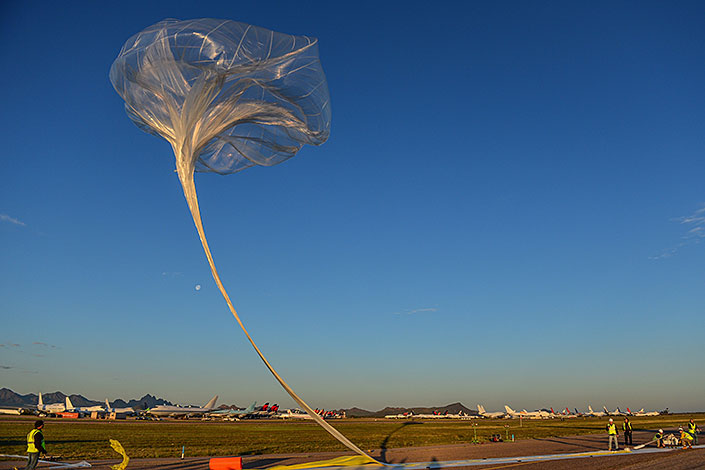Using a smartphone as a flight computer and data-recording device, University of Virginia undergraduate students soon will launch a payload they designed, built and tested – to measure cosmic radiation in the stratosphere – aboard a NASA high-altitude balloon.
Measurements from the payload during the balloon’s 15-hour flight, rising 23 miles above the Earth’s surface, will be used to validate and possibly correct NASA’s computer models that estimate baseline radiation levels at altitudes where commercial aircraft operate. Cosmic rays, unfiltered by Earth’s lower atmosphere, can be a considerable source of radiation exposure for aircraft and spacecraft occupants.
“This is an opportunity to involve our undergraduates in a real-world project; working side-by-side with NASA engineers and scientists,” said Christopher Goyne, a U.Va. professor of mechanical and aerospace engineering and faculty leader of the student-run project. He also directs U.Va.’s Aerospace Research Laboratory. “The students are effectively working as professional engineers and scientists; they’ve done all the design work and construction of the payload, they’ve tested it, and now they’re ready to fly it.”
The U.Va. project is one of several university ventures funded by NASA to conduct various Earth and space science missions as part of the space agency’s Undergraduate Student Instrument Program. The aim is to gather new data and insights from actual experimentation, and to provide hands-on learning experiences for young engineers and scientists.
Named JefferSat Cosmic Ray Mission, in honor of U.Va. founder Thomas Jefferson, the payload is being attached to a gondola that will hang from a 400-foot tall scientific balloon – significantly taller than the Statue of Liberty – that will float to 120,000 feet above sea level with its suite of sensors. After the data have been collected, the gondola will parachute to the ground somewhere in the American Southwest – depending on how far the winds carry the balloon from its launch location in Fort Sumner, New Mexico that the student crew will get to watch.
“Being able to work as a team with NASA on a real hands-on engineering project that will provide useful first-time data is a great opportunity for a student,” said Patrick Van Dam, a fourth-year student from Virginia Beach who came into the project while taking a spacecraft design course taught by Goyne. Van Dam hopes to use the experience, and his new NASA connections, to find work in the aerospace industry after he graduates next year.
“I hope to eventually work with a company like SpaceX or Orbital Sciences, on projects for resupplying the space station,” he said.
Van Dam and two student colleagues, all majors in aerospace engineering, are completing the work of previous spacecraft design students whose ranks have also included mechanical engineering and astronomy majors. The group has collectively spent the last two years collaborating with scientists and engineers at both NASA’s Langley Research Center and NASA’s Wallops Flight Facility.
The students will spend coming weeks analyzing the data they capture to compare with and help fine-tune computer models that attempt to predict radiation levels in the atmosphere.
“Our goal, ultimately, is to understand the science and improve the accuracy of prediction of radiation exposure during commercial air travel,” Goyne said.
The weather will dictate the exact launch date and time, which could come as soon as Friday. To see preparations and the eventual flight in action, click here and here.
Media Contact
Article Information
September 24, 2015
/content/uva-spacecraft-design-team-launch-payload-aboard-nasa-scientific-balloon-0

